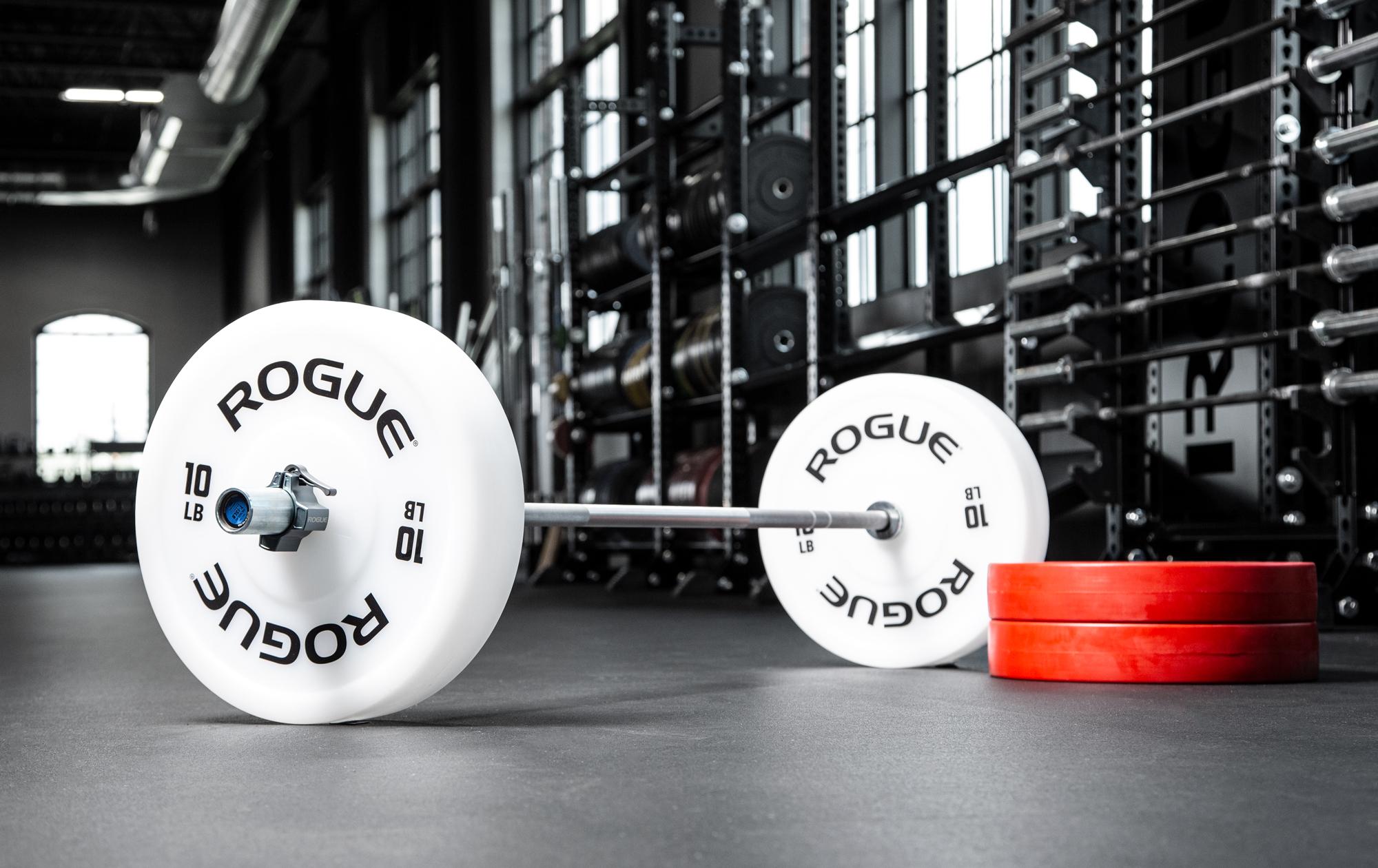Rogue bumper plates vs Technique plates
This is a comparison between the Rogue bumper plate and the Technique plates including pros, cons and alternatives. Follow the links for more details

Which plates to get from Rogue?
This video discusses which plates you might want to buy for your home gym from Rogue Fitness. Good options are their bumper plates or simple cast iron plates if you want to save money. I personally own the Black training plates from rogue and like them a lot.

Overview and review of the Rogue Technique plates
The Rogue technique plates will set you back about $125 - $160 dollars. These plates are especially good to use for beginning weightlifters. This overview has originally been published in the article "Which rogue plates to buy" which you can find on this blog.
What else to consider from Rogue
Most popular Rogue plates
This is an overview of the most popular Rogue plates on Marathon-Crossfit.com in 2020 based on views and click thoughs for purchase on Rogue Fitness. If you want more detail on how the data was collected and what the strengths and shortcomings of the data set are you can dig deeper on what were the most popular rogue products in 2020.

These were the most popular rogue plates on Marathon-Crossfit.com. On the plates, I would caution between overall popularity and the popularity of my site. The plates listed below are more niche than the Rogue bumpers, the calibrated steel plates, and competition bumpers. If you want a safe bet for your use case these three might be better, as more people buy them.
-
-
-
-
-
The
Fleck plates are a variation on the Rogue bumper plates which have been infused with red, blue, yellow, and green to indicate the weight of the plates. The splash of color also makes them more fun compared to the regular bumpers. If you find the rogue bumpers too bland but also do not want to shell out more than $1000 on calibrated steel plates or competition bumpers to get color coding then the
Fleck plates are for you.
You can read the full review of the Fleck plates via this link.
The
Rogue Urethane plates are color-coded and also claim the best durability in the Rogue plate portfolio. Whether that warrants the high price tag compared to regular bumpers is a question you have to answer for yourself, but I personally don’t think so. If you want to spend more money on plates, spend it on precision rather than durability in my personal opinion within the Rogue portfolio. Rogue equipment is known to be more durable than the competition so I would not put too much focus on this unless you run an Olympic training center where the plates will go through hundreds of heavy drops per day.
You can read the full review of the Rogue Urethane plates here.
Overview of the technique plates
Technique plates are special plates which have the same diameter of 450mm than regular
competition plates but at a much lower weight. This is achieved by using high-density polyethylene Plastic (HDPE). These are the right plates to teach beginners, juniors or getting rehabbing athletes back to lifting. These plates combined with a technique
bar can lower the weight of the
bar for a beginner to 15kg to enter the sport of Olympic weightlifting. If you work a lot with children or very unfit beginners, this is a good plate to add to your arsenal.
The
technique plates are available in red and white in 2.5kg, 5kg, 5lb, and 10lb versions. They have the following specs:
- 450mm Diameter
- 50.2mm Center Hole Diameter
- Grooved edge for easier handling
Pros of the technique plates
Technique plates help to ease into the sport and to hone your lifts to perfection. If your gym or yourself are serious about Olympic weightlifting they will be a great addition to your arsenal to grind on technique without wreaking your body.
Cons of the technique plates
These plates have a very narrow and specialized use case. If you do not enter the realm of Olympic weightlifting you will probably only get very little use out of them.
Alternatives to the technique plates
Overview and review of the Rogue Bumper plates
The Rogue bumper plates will set you back about $565 dollars or $3.76 dollars per kg. These plates are especially good to use for all purposes in commercial gyms. This overview has originally been published in the article "Which rogue plates to buy" which you can find on this blog.
Overview of the Rogue Bumper plates
The
HG Bumper plates are the workhorse in the plate portfolio of Rogue. If you want cheap plates with a three-year warranty which do the job, this is your place. These plates will last, can be abused in any kind of way and will perform. The disadvantages of these plates are that they are harder to handle than
6 shooters and do are as plain as they come. They score 88 points on the durometer scale and have therefore slightly more bounce than the high range options from Rogue. The only color option for these plates is black.
Weight / Diameter / Thickness / Price per pair
25kg / 450mm / 3.5'' / $162.50
20kg / 450mm / 3.25'' / $130
15kg /450mm / 2.625'' / $97.50
10kg / 450mm / 1.75'' / $63
5kg / 450mm / 1'' / $52.50
Available sets
90kg, 2x 10-15-20 kg $370
110kg, 2x 10-20-25 $437.50
120kg, 2x 15-20-25kg $460
140kg, 2x 10-15-20-25kg $525
150kg, 2x 5-10-15-20-25kg $565
This is the no-nonsense choice if you are starting out and just want weight.
Pros of the Rogue bumper plates
These plates will not oxidate and can be used outside. If they reak your heart won't sink and you just replace them. They will be forgiving when dropped on feet or on the skin. Hurting your fingers is less likely than with other plates. You can drop them from overhead. Take your pic.
Cons of the Rogue bumper plates
These plates look dull and you can not see what you have exactly loaded. You also will not fit as much weight on the
bar than with higher price ranged options from Rogue. It is also more likely with these plates, tat
th weight varies more considerably compared to what is stated on the plate.
Alternatives to the Rogue bumper plates
The
6 Shooter Urethane plates are another workhorse option with a different design. The six holes make it easier for athletes to handle the weight. These plates can also be used for workouts without a
barbell, which is hard to do with
bumper plates.
Olympic weights are the ultimate plate for getting as much weight as possible on your
bar at minimum cost. These metal plates are not fancy, but weigh a lot while not taking up a lot of space on the
bar. If your gym should make clanging and banging noises, this is the plate to get.
Competition plates are the Nascar version of
bumper plates. These plates are color coded so you can easily see how much weight is on the
barbell. They also have a steel core which makes them behave better when you change direction for the Olympic lifts.


